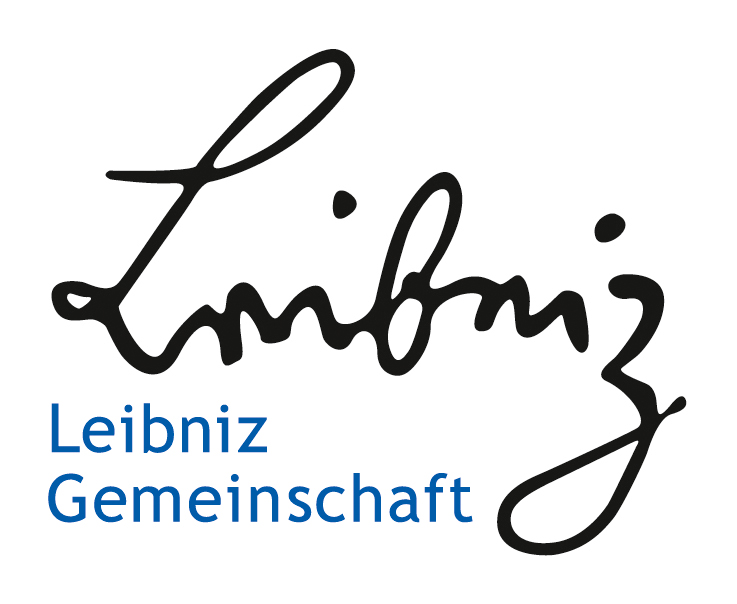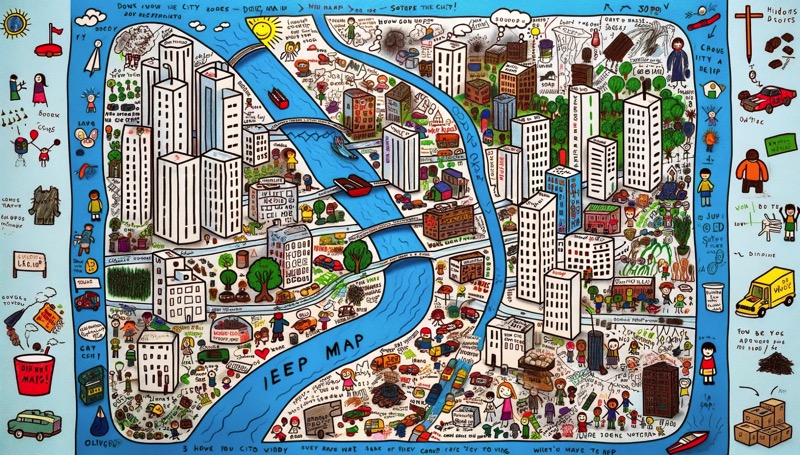Author:
Eric Losang
Citation:
Losang, E. (2024): Deep Mapping. In: VisQual Methodbox, URL: https://visqual.leibniz-ifl-projekte.de/methodbox/2023/09/14/deep-mapping-2/
Essentials
- Scope: Deep mapping goes beyond traditional maps by incorporating multiple dimensions of information.
- Focus: Deep mapping emphasizes the use of narratives and personal experiences as essential components.
- Focus: Deep mapping recognizes the emotional and affective dimensions associated with places.
- Participation: Deep mapping often involves engaging with local communities and stakeholders. It incorporates their voices, knowledge, and perspectives to create a more inclusive and accurate representation of the place.
- Ambition: Deep Mapping encourages interdisciplinary collaboration and the integration of different forms of knowledge and expertise. It also encourages reflection and critical thinking about the power dynamics, social inequalities, and historical contexts that shape a place. It prompts questioning and analysis of dominant narratives and perspectives.
Description
Place is how we make the world meaningful and the way we experience the world. A deep map render space into place. Thus, a deep map seeks to uncover the assemblages of this place by putting multiple visualization elements together on one or multiple connected maps. However, the concept of space in deep maps is not limited to a Euclidean space, it can also render a semantic space.
History
The concept of deep mapping emerged out of the psycho-geographical experiments of the early French Situationists in the 1960s. More recently, the term has garnered popular interest through the American author William Least Heat-Moon’s study PrairyErth: A Deep Map which employs composite, multimedia methodologies to investigate the cultural and historical geographies of Chase County, Kansas. The subtitle of his work – a deep map – gave the concept a name and the question behind the mapping process – “Would coordinates lead to connections?” offers a rather simple purpose (Bodenhamer, Corrigan and Harris, 2015, p.1).
Procedure
Step 1: Define the question the visualization may answer (this can be refined during the process according to the content of the collected materials).
Step 2: Identifying/Organizing a critical mass of contributors to be addressed, phrasing a question/statement given to addressed the contributors
Step 3: Collection of materials and comments on the survey
Step 4: Horizontally, organizing the materials (thematically, spatially, by type of media, by groups of contributors etc.)
Step 5: Vertically, identify patterns that semantically group the materials (e. g. by topics)
Step 6: Identify qualitative connections between the organized, ordered and arranged materials to identify central topics, focused by the contributors
Step 7: Place and connect materials according step 5/6 (on an existing map outlining the space or in a semantic network, both considering the question from step 1)
Step 8: Restart (with step 5/6 or sometimes step 1) or refine (specifying findings)
Step 9: Publish (for consent), re-publish if approved.
Requirements
The base for making a deep map is a collection of individual statements, opinions, views, graphics (ranging from photos, paintings, sketches, diagrams up to existing maps) etc. These materials need to be organized to be able to be used by all map makers. Various software for collecting heterogeneous media can be used for large amounts of compiled data, but for analog materials a set of boxes and a physical storage should be sufficient. For the map compilation generously sized (especially when dealing with analog materials) working space, to discuss and arrange materials is helpful.
References
Bodenhamer, D. J., J. Corrigan, T. M. Harris, (eds.) 2015, Deep Maps and Spatial Narratives. Bloomington, Indiana: Indiana University Press. https://iupress.org/9780253015600/deep-maps-and-spatial-narratives/
Bodenhamer, D. J. (2022): The varieties of deep maps. In: Making Deep Maps. Foundations, Approaches, and Methods, Bodenhamer, D. J., J. Corrigan, T. M. Harris (eds.). Routledge Spatial humanities series. Abingdon, New York: Routledge. pp. 1-16. http://routledge.com/Making-Deep-Maps-Foundations-Approaches-and-Methods/Bodenhamer-Corrigan-Harris/p/book/9780367743857
Heat-Moon, W. L., 1991, PrairyErth (A deep map)- An Epic History of the Tallgrass Prairie Country. Boston: Houghton Mifflin Company.
kollektiv orangotango, 2018, This Is Not an Atlas. A Global Collection of Counter Cartographies. De Gruyter. https://doi.org/10.1515/9783839445198
Wood, D. 2022, The Art of Deep mapping. In: Making Deep Maps. Foundations, Approaches, and Methods, Bodenhamer, D. J., J. Corrigan, T. M. Harris (eds.). Routledge Spatial humanities series. Abingdon, New York: Routledge. pp. 17-37. https://www.routledge.com/Making-Deep-Maps-Foundations-Approaches-and-Methods/Bodenhamer-Corrigan-Harris/p/book/9780367743857



Leave a Reply